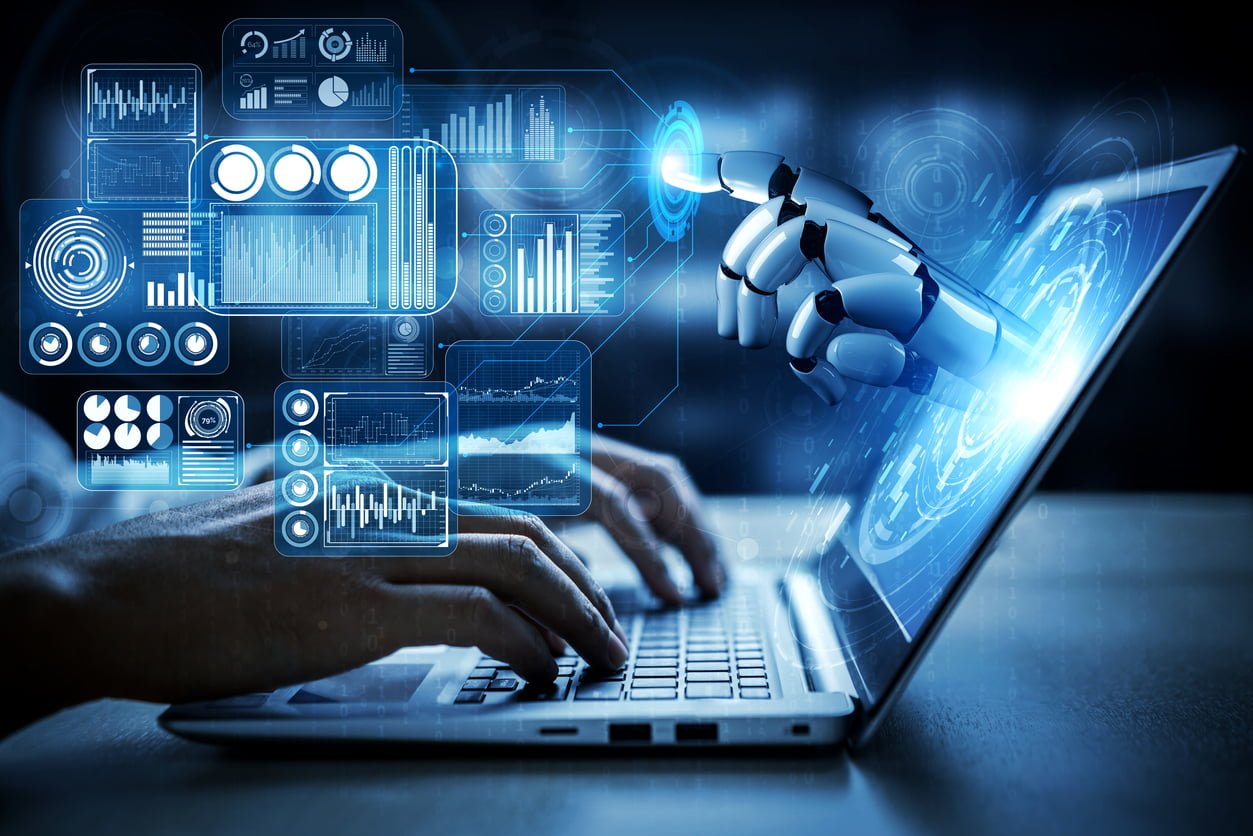Machine learning (ML) is a subset of artificial intelligence (AI) that focuses on giving computer systems the ability to improve from their experiences without being explicitly programmed by an outside source. Put another way, it allows for computer programs to analyze data and use it to learn for themselves. Machine learning methods are sometimes grouped under the umbrella of deep learning, but a machine learning algorithm can generally be placed into the category of supervised or unsupervised learning.
The supervised machine learning approach allows a program to apply concepts previously learned to new data using pattern recognition and labeled examples. Essentially, the machine is shown how to properly perform a function and is then able to infer how to perform the function based on the training data.
The unsupervised machine learning approach involves the training of an algorithm without classified or labeled data. This allows the algorithm to perform functions using unstructured data, enabling unsupervised algorithms to perform more complex tasks than their supervised counterparts.
There are a wide variety of machine learning models that fit one of these two categories or represent a combination, and each machine learning model is useful for specific tasks. Sets of algorithms are gathered in neural networks which are somewhat comparable to the human brain. The following are just some of the practical applications of machine learning.
1. Classification
It’s hard to overstate the applications of machine approaches when it comes to classification and categorization. The supervised machine learning approach is particularly suited to these tasks since it uses known labels to construct a data set. These tasks essentially consist of diving groups of data each into a separate category. Classifier systems are integral to all computer fields as they are the basis of organization. Without classifiers, all other ML applications would be impossible, from big data applications to a small relational database.
2. Image recognition
One of the most common uses of machine learning is image recognition. This is a process of identifying key features or objects present in digital images. A good example of this is face detection. It also has many more applications in analysis such as pattern recognition, individual face recognition, letter recognition, and more. While there are many techniques available to achieve these goals, using a machine learning approach has become the preferred method in recent years.
Optical character recognition can be taken a step further through sentiment analysis. This is a real-time application of machine learning that utilizes data mining of text to determine the sentiment of the author. This can be particularly useful for data analysis and storage and can help organizations quickly determine metrics such as customer satisfaction.
3. Video surveillance
Being able to properly identify a person in the frame on security camera footage is extremely important, and video surveillance is one of the more advanced machine learning applications. Video files contain much more information than text or image files, and extracting all useful information is crucial. An ML algorithm can track a person across multiple frames of a video and identify them based on walking pattern and other identifying features or behavior, with facial recognition being the most prominent. Even a glimpse of a potential offender in the image can be useful, and machine learning methods are invaluable to analysts trying to make the most of security footage.
4. News coverage
As natural language generation continues to advance, it’s actually possible for bots to use a database of local information, historical data, or any other relevant sources to write news stories. This is often done to cover gaps in local news coverage, and many news outlets such as USA Today, Reuters, and Buzzfeed have used news bots to create stories and make predictions as to how news will spread. News bots can also be used to analyze sources, and some have even been able to convert simple stories into short videos and narrate them thanks to computer speech recognition.
5. Financial security
Naturally, cybersecurity is one of the top priorities for any financial institution, and it’s one of the most important applications of machine learning. Banks use ML methods to detect fraudulent transactions and alert their clients to the possibility of such activities. This is done by analyzing financial activities and delivering risk scores to make predictions about fraudulent actions.
Of course, online retailers and payment services also need to implement impeccable fraud detection as well because recovering from cyberattacks can be much more difficult than preventing them in the first place.
6. Computer speech recognition
Sometimes referred to as automatic speech recognition, this is the transformation of the spoken word into text, and it makes data entry much simpler as the spoken word is significantly faster than typing speed. Of course, machine learning applications go far beyond dictation now that smartphones and digital assistants have become so prevalent.
Machines can now easily understand a speech signal, a fact consumers take advantage of every day when they use voice search in a search engine or instruct Alexa to choose their next movie. Speech recognition can even allow users to directly speak to chatbots, since ML techniques can “translate” sound waves into bits, although there are still some challenges, such as speech speed, that can make the translation difficult. Still, this technology has already found its way into everyday life for many.
7. Transportation
How often do you bring up google maps while driving? Some of the most useful features of this service are only possible thanks to machine learning. A good example of this is its ability to predict traffic or bus schedules. This is done by collecting location data for vehicles and then accounting for anticipated stop/slow times to give a real-time estimate of traffic and delays.
Machine learning is also used by other services like Uber. For example, Uber is able to anticipate rider demand and direct its driverless cars thanks to data gathered and analyzed from sensors and cameras placed on vehicles. Check out our guide to learn more facts and statistics about self-driving cars.
8. Medical services
Health care is one of the noblest uses for machine learning, and applications can range from quickly scanning test results for breast cancer to using artificial neural networks to mimic the thought processes of human brains and gain deeper insights into our own minds.
Machines can even be used to make a medical diagnosis in certain circumstances where patients outnumber doctors or where fatigue could lead to harmful errors. For example, Infervison AI is being used in China to catch cases of lung cancer early. Without this machine, the lack of qualified radiologists would make saving many lives near impossible.
Of course, not all applications are life and death. Machine learning can be used to make simple aspects of doctor visits easier, such as therapy planning for your next session.
9. Retail and service
Machine learning methods have made many retail and customer service jobs more efficient by making it easier than ever for customers to buy products and by improving the level of customer service that can be provided. Consider the product recommendations you’ll find on sites like Amazon and Google. These sights have studied the products that interest you, and they bring similar products to your attention.
Customer support has also improved dramatically in more recent years now that customers can interact with chatbots and choose their communication methods when contacting customer support. Managers in nearly any field can now do their jobs easier as well thanks to virtual personal assistants and customer analytics technology.
10. Social media
Social media sites like Twitter and Facebook can use programs that automatically search for objectionable content and delete it or to recommend certain posts to users. Machine learning is used at Pinterest to search through the millions of pins uploaded each day and to optimize their ads. Essentially any social media site could use deep learning for information extraction and further analysis of the millions of ideas that get posted each day.
For some more detailed examples of machine learning, refer to this video from edureka!






